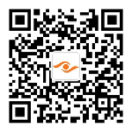
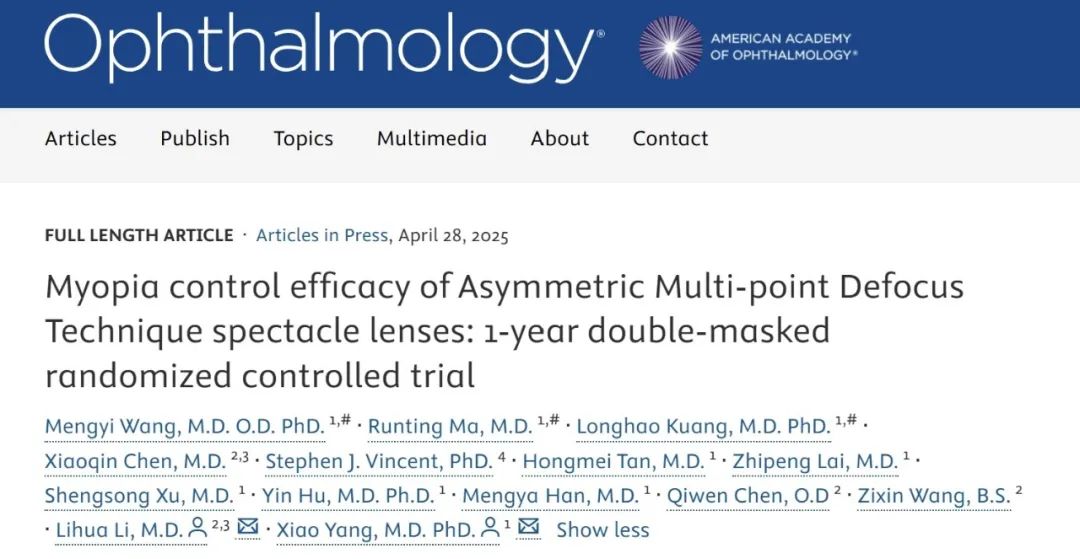
Myopia has become a significant public health challenge in China, particularly among children and adolescents, characterized by early onset, high prevalence, and rapid progression. Without effective intervention, myopia can progress to high myopia, significantly increasing the risk of irreversible vision impairment and posing a serious threat to visual health. In recent years, myopia-control spectacles have emerged as a promising solution. Among these, microstructure spectacle lenses with defocus lenslet have been recommended by the International Myopia Institute (IMI) as a key intervention due to their efficacy, safety, accessibility, and affordability, becoming a cornerstone of clinical myopia management strategies.
Research Background
Previous studies suggest that myopia control efficacy is closely linked to the strength and coverage area of defocus signals; higher defocus magnitude and larger defocus area may yield more significant control effects. However, excessively strong defocus signals can compromise visual quality and reduce wearer compliance. Therefore, an ideal defocus lens must strike a balance between efficacy and visual comfort. The novel Asymmetric Multi-Defocus Technology (AMDT) lens enhances both the defocus magnitude and area. Furthermore, it innovatively optimizes the central optical zone into a "shell-shaped" design based on the characteristic "inverted triangular" eye movement pattern observed in subjects during distance viewing and reading tasks. This unique design ensures clear vision across various gaze activities, simultaneously boosting the defocus signal while maintaining good visual quality.
New lens designs require rigorous scientific validation of efficacy and safety. To this end, Prof. Yang Xiao's team conducted a randomized, controlled, double-blind clinical trial (RCT). This study not only evaluated the myopia control efficacy of the AMDT lens in children but also comprehensively assessed its safety and visual quality, providing high-level evidence-based medical support for clinical myopia management decisions.
This study was led by Prof. Yang Xiao. Conducted at Zhongshan Ophthalmic Center, Sun Yat-sen University, and the Optometry Center of Tianjin Eye Hospital, it enrolled 144 participants aged 8-13 years. Participants were randomized (1:1) to wear either the AMDT lenses or conventional single-vision (SV) spectacles. Cycloplegic autorefraction spherical equivalent refraction (SER) and axial length (AL) were measured at baseline, 6 months, and 12 months. Adaptation and visual performance questionnaires were administered during the intervention period.
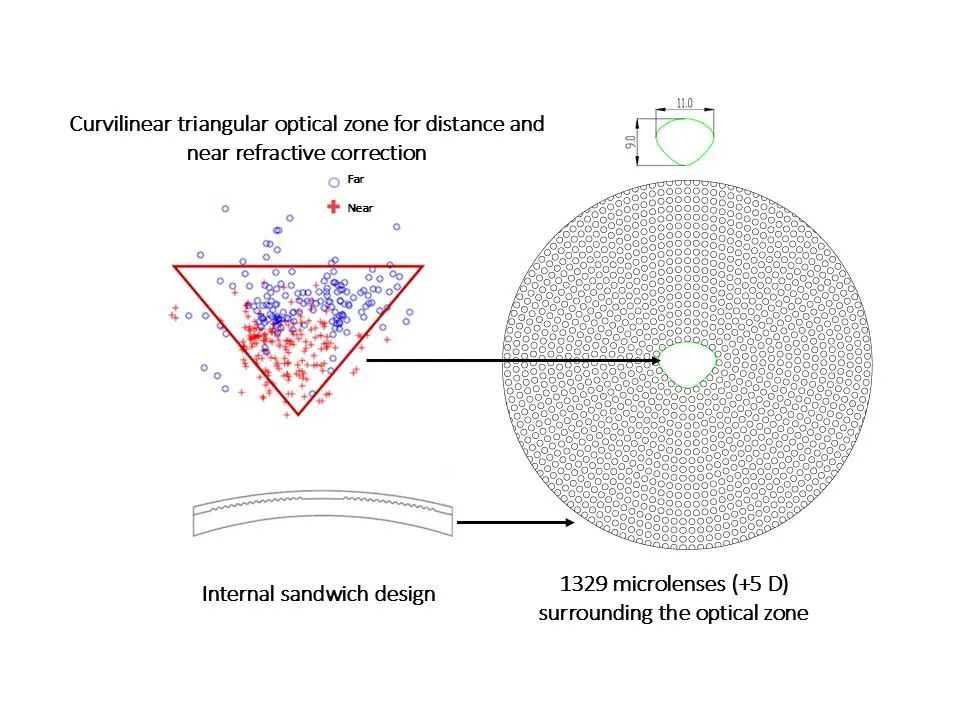
Figure 1: Schematic design of the Asymmetric Multi-Defocus Technology (AMDT) lens
Study Details
The results demonstrated a significant myopia control effect for the AMDT lens. After adjusting for confounders, the control (SV) group showed an SER progression of 0.53 D over one year, compared to only 0.14 D in the AMDT group (representing an approximately 74% reduction). Similarly, axial elongation was 0.33 mm in the control group versus 0.16 mm in the AMDT group (approximately 51% reduction) (Figure 2).
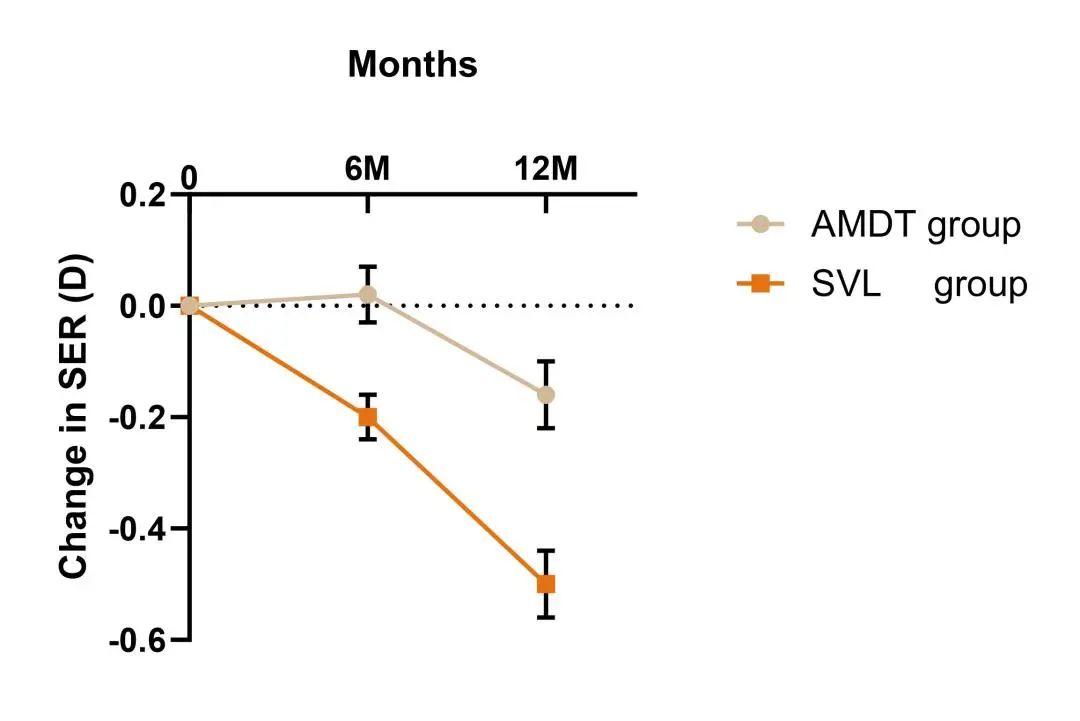
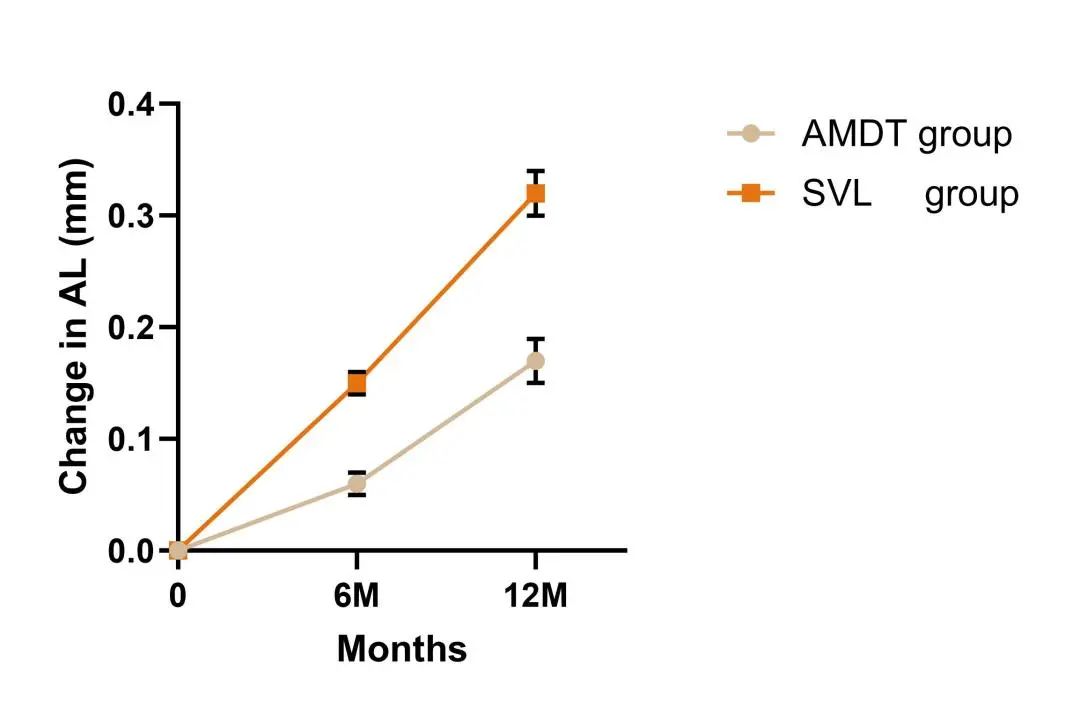
Figure 2: Comparison of SER progression (top) and AL elongation (bottom) between the experimental (AMDT) and control (SV) groups
After one year, 42.2% of participants in the AMDT group (vs. 15.9% in the control group) showed no myopic progression or exhibited a hyperopic shift in SER (mean change: +0.29 D hyperopic shift). Likewise, 16.9% in the AMDT group (vs. 1.4% in controls) showed no axial progression or axial shortening (mean change: -0.07 mm) (Figure 3).

Figure 3: Distribution of one-year SER progression (left) and AL elongation (right) in the experimental (AMDT) and control (SV) groups
Furthermore, no statistical difference in spectacle wear ing time was found between the two groups. Subjective assessments and safety analysis confirmed that the AMDT lens is both effective and safe. At the end of the 12-month intervention, there were no significant differences between groups in best-corrected visual acuity (BCVA), intraocular pressure (IOP), corneal curvature, visual function, or visual questionnaire scores.
Through this multicenter RCT, Prof. Yang Xiao's team has provided the first high-level evidence confirming that the novel Asymmetric Multi-Defocus Technology (AMDT) lens significantly slows myopia progression in children. The AMDT lens innovatively achieves a dual balance of "effective control" and "good visual experience," offering valuable insights for the future optimization of defocus spectacle lens designs. RCTs form the cornerstone of clinical decision-making. Prof. Yang Xiao's team rigorously conducted this RCT through multicenter collaboration and standardized protocols, providing robust evidence-based medical support for myopia control. The study advocates for "evidence-based myopia management," aiming to deliver truly effective treatment solutions for patients.
Research Team
These findings were published online on April 28, 2025, in Ophthalmology (Impact Factor: 13.2; JCR Q1), a leading journal in the field. Prof. YANG Xiao from Zhongshan Ophthalmic Center, Sun Yat-sen University, is the corresponding author. Prof. LI Lihua from the Optometry Center of Tianjin Eye Hospital is the co-corresponding author. Dr. WANG Mengyi, Dr. MA Runting (PhD candidate), and Dr. KUANG Longhao from Zhongshan Ophthalmic Center are co-first authors.
01 Corresponding Authors
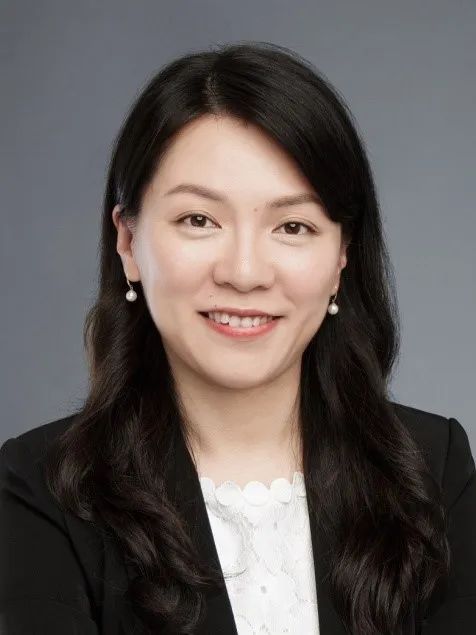
Yang Xiao, Professor
Zhongshan Ophthalmic Center, Sun Yat-sen University

Li Lihua , Professor
Optometry Center of Tianjin Eye Hospital
02 First Authors

Wang Mengyi, Physician
Zhongshan Ophthalmic Center, Sun Yat-sen University
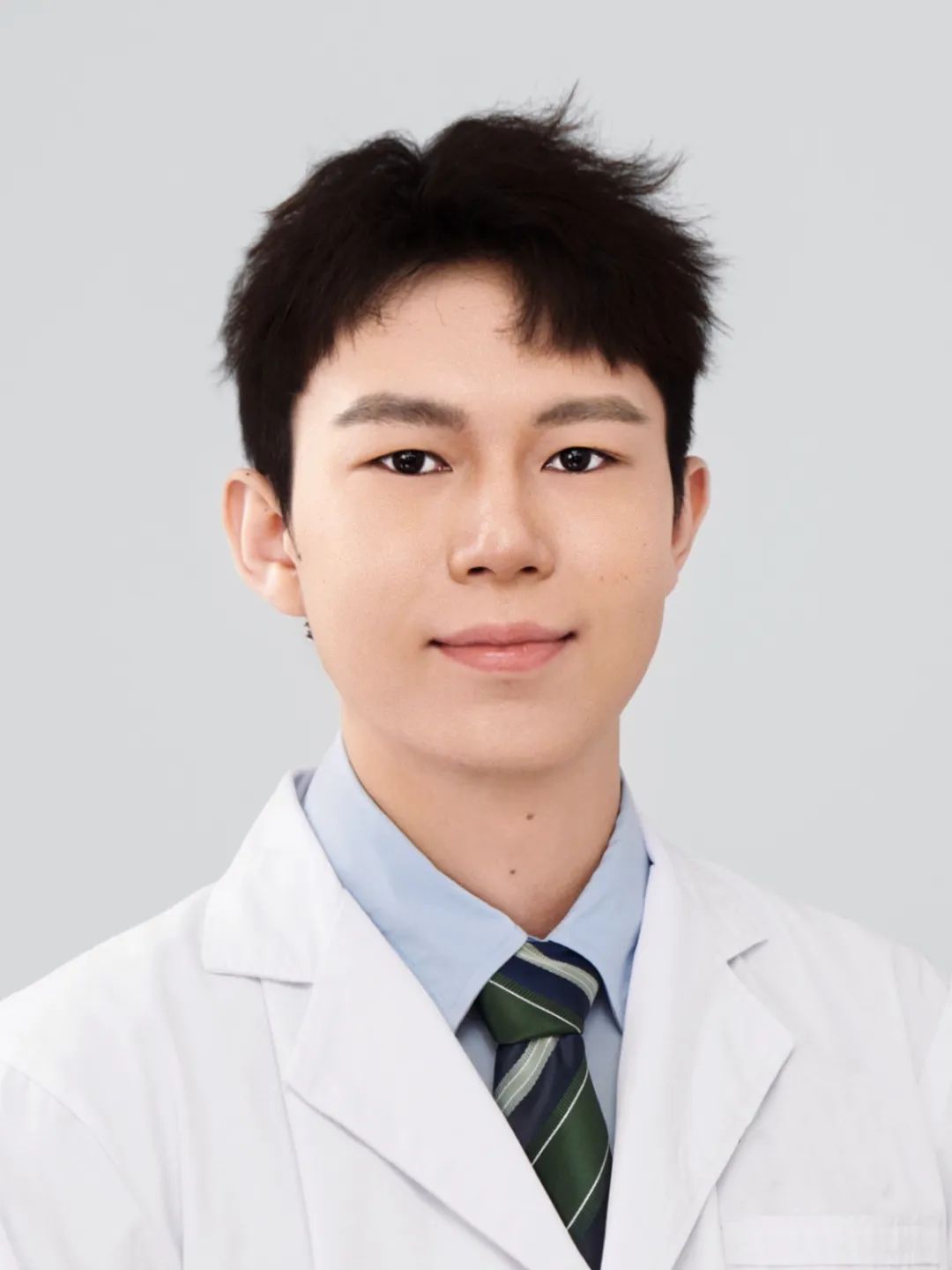
Ma Runting, PhD Candidate
Zhongshan Ophthalmic Center, Sun Yat-sen University
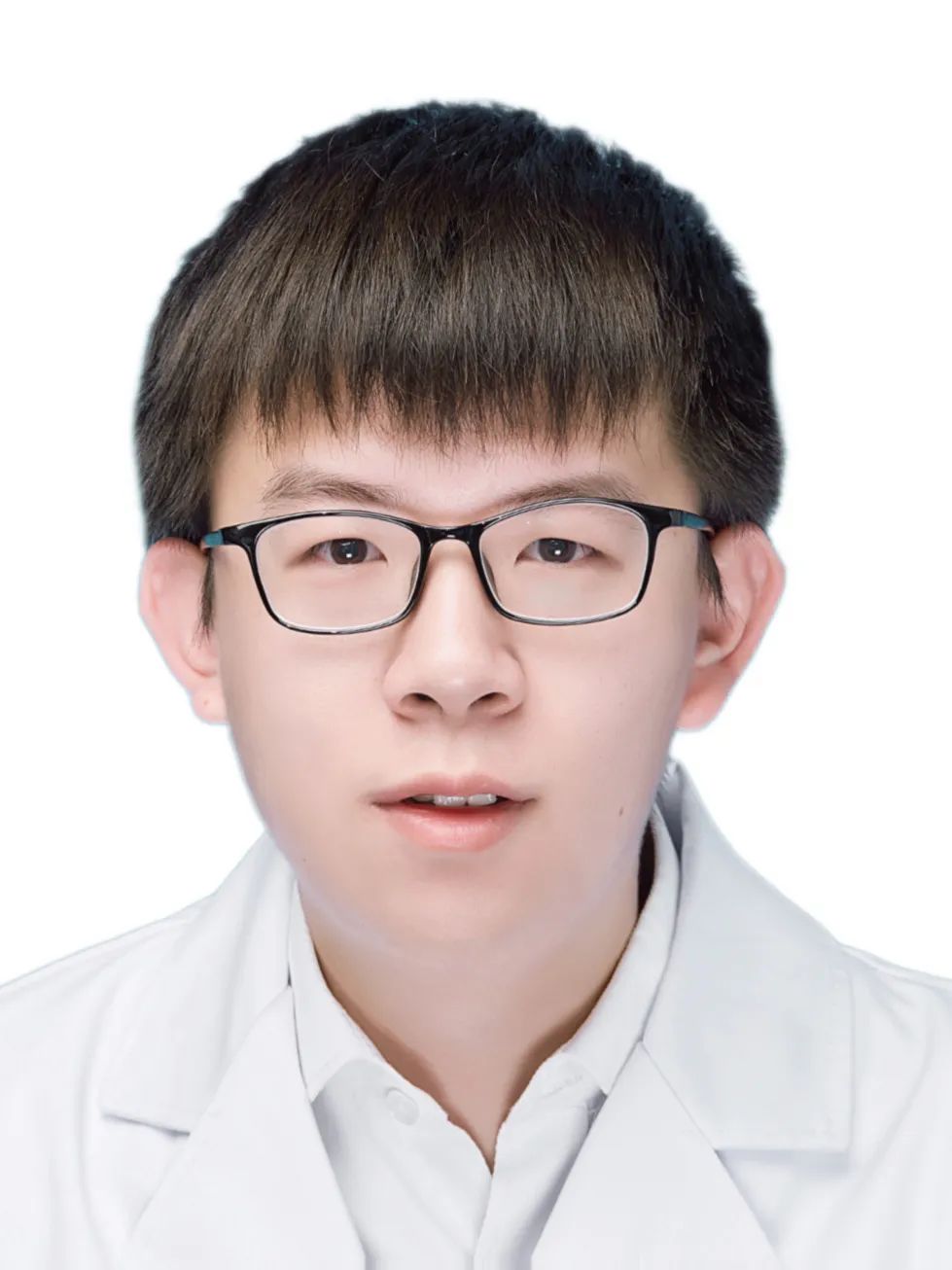
Dr. Kuang Longhao
Zhongshan Ophthalmic Center, Sun Yat-sen University
Link to Original Article:
https://www.aaojournal.org/article/S0161-6420(25)00272-6/abstract


